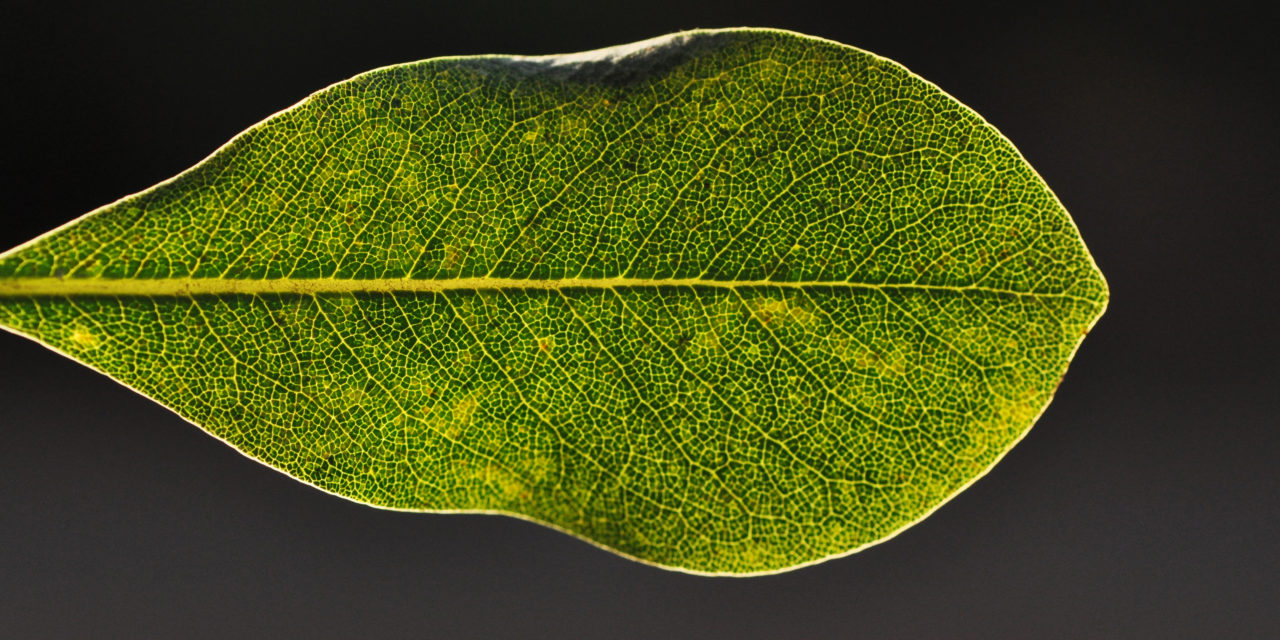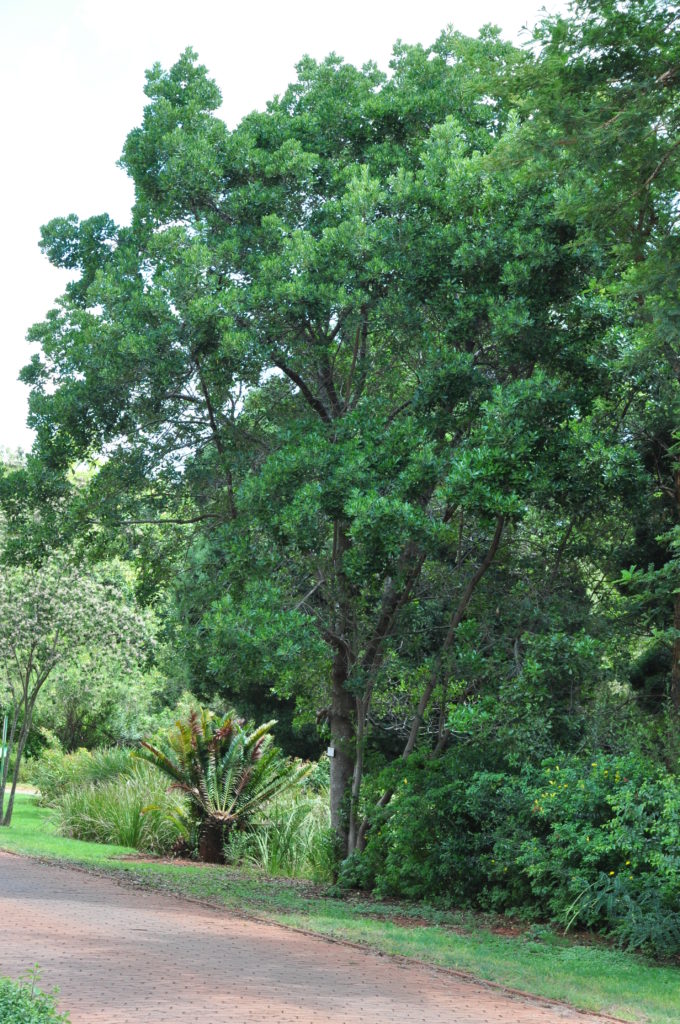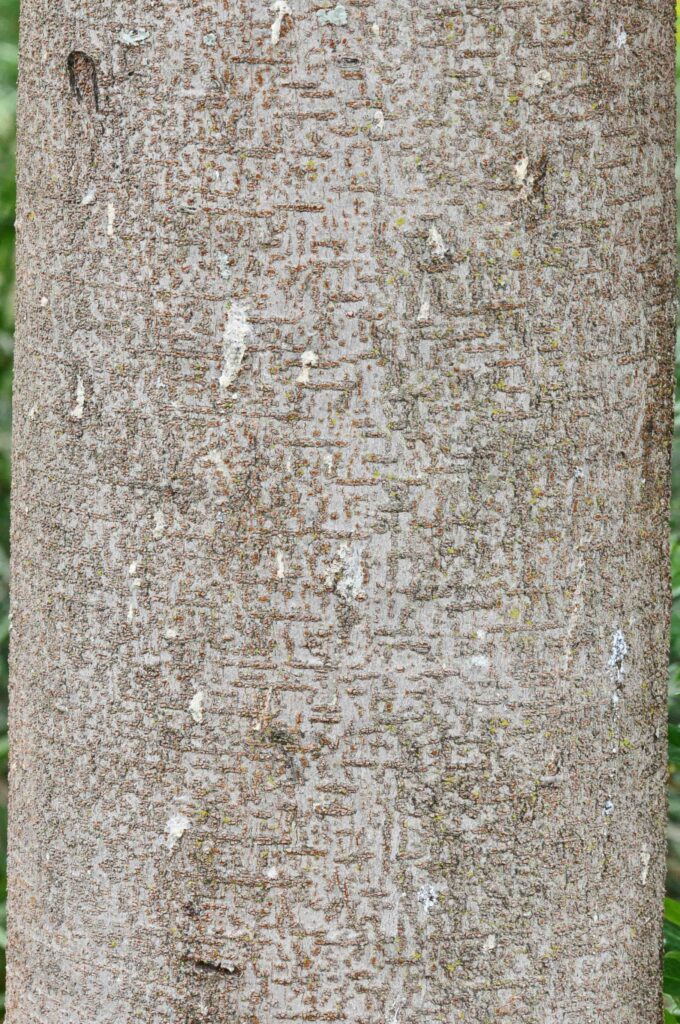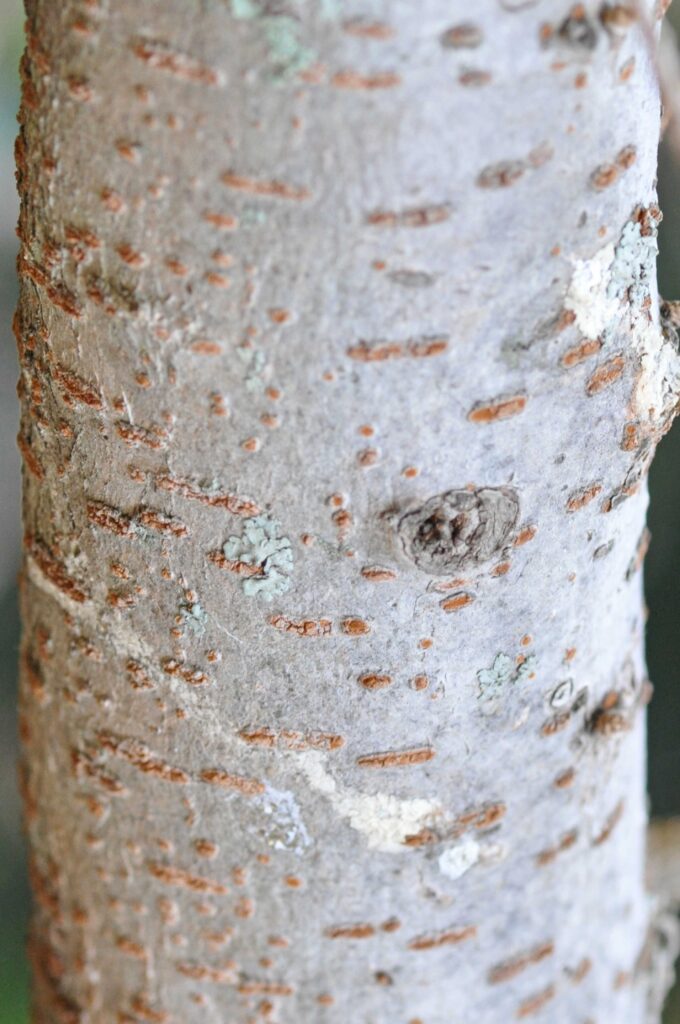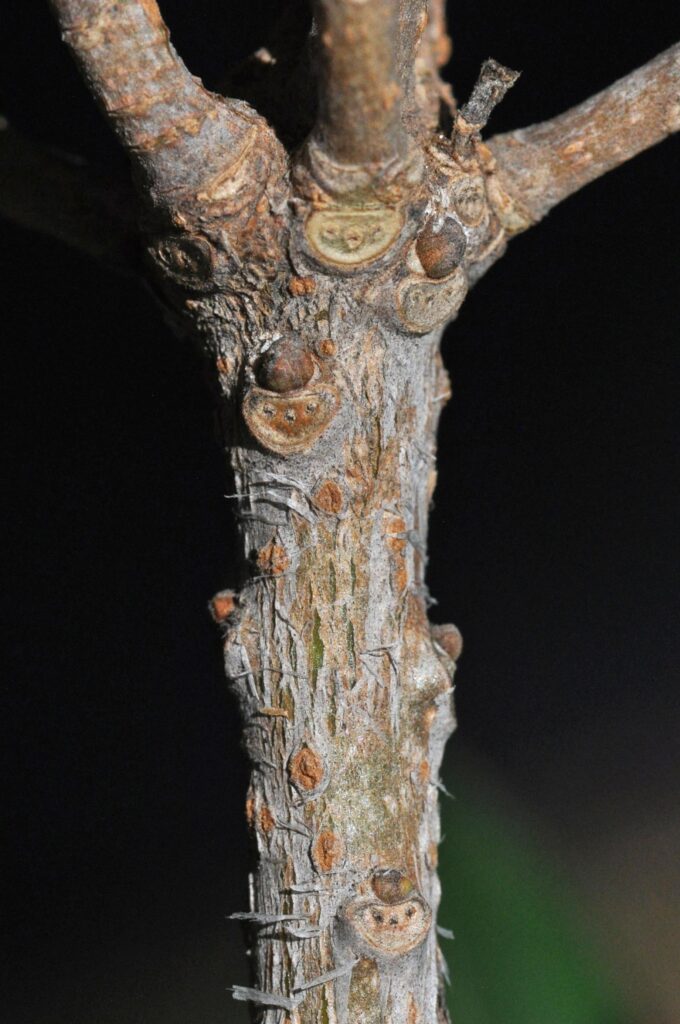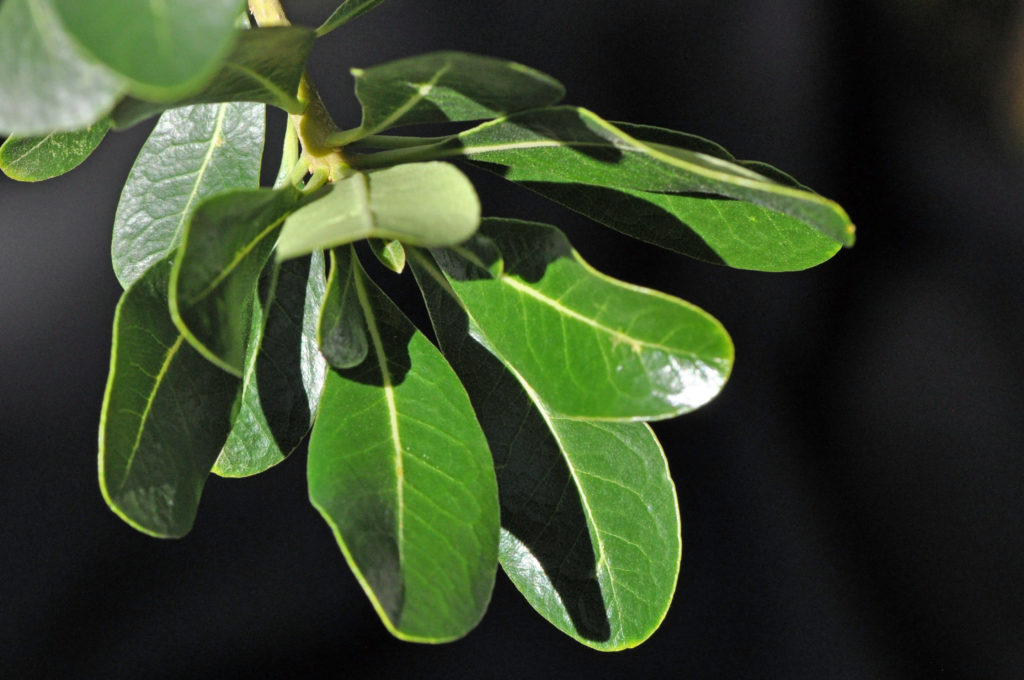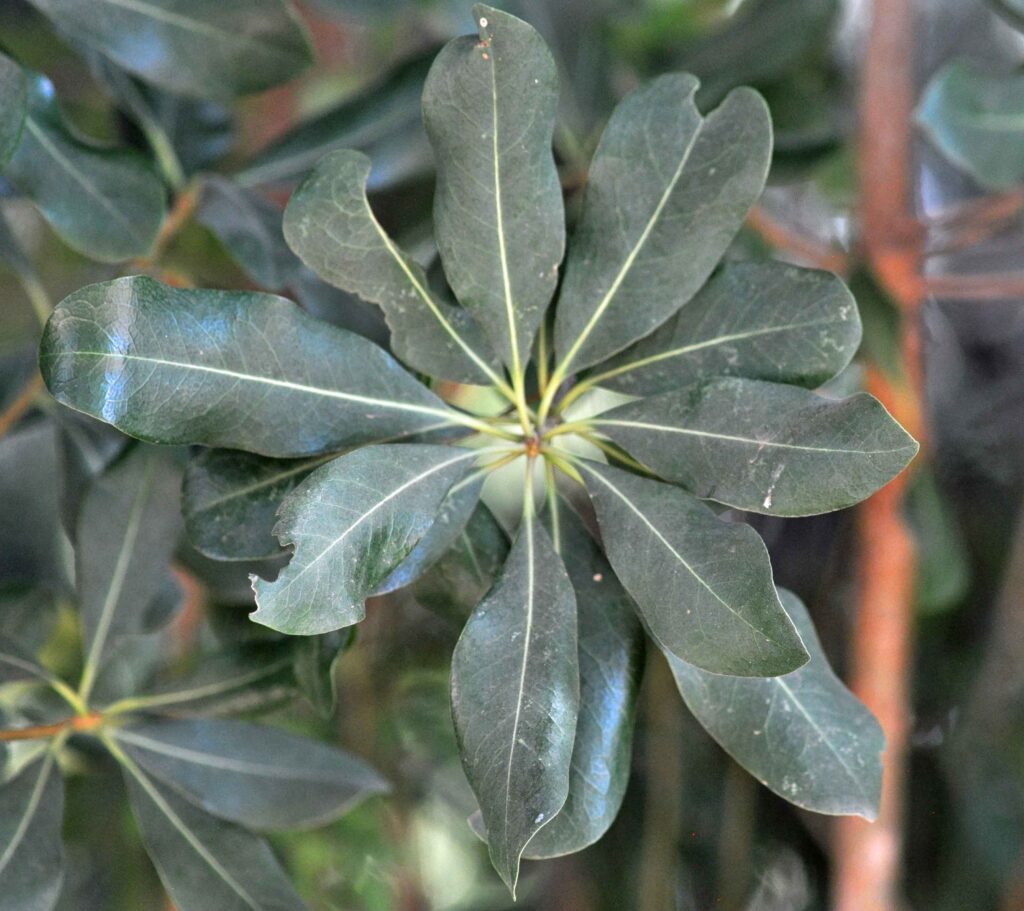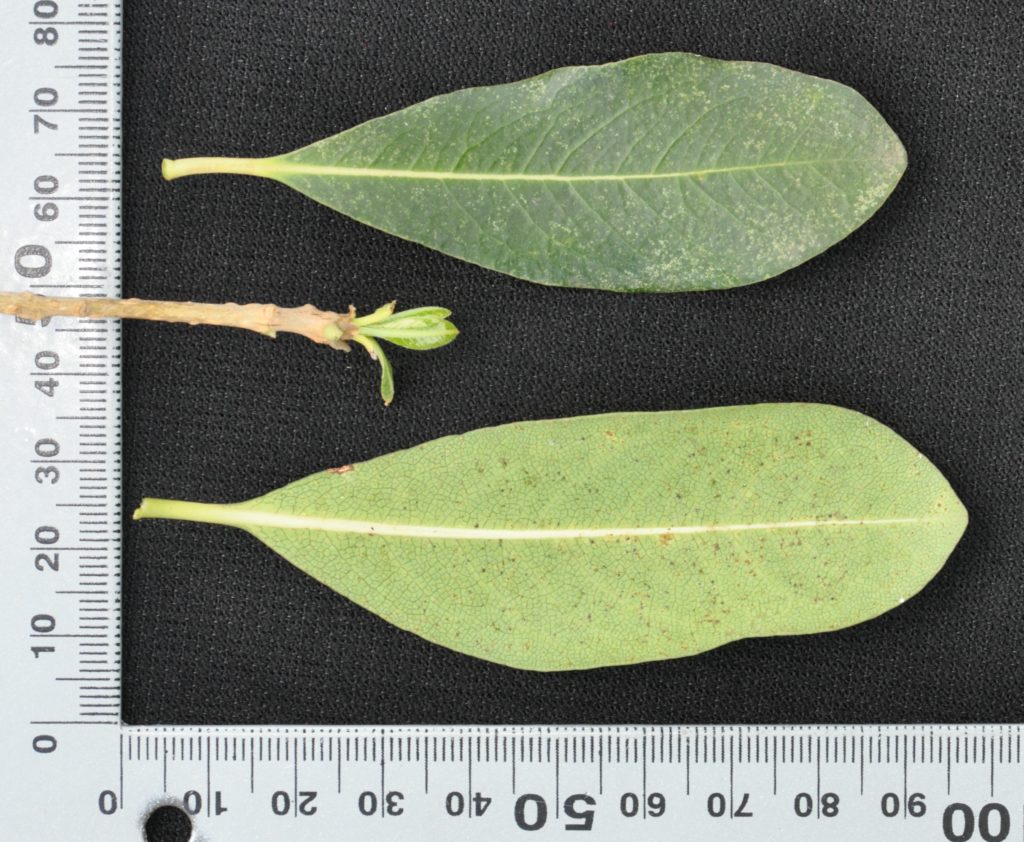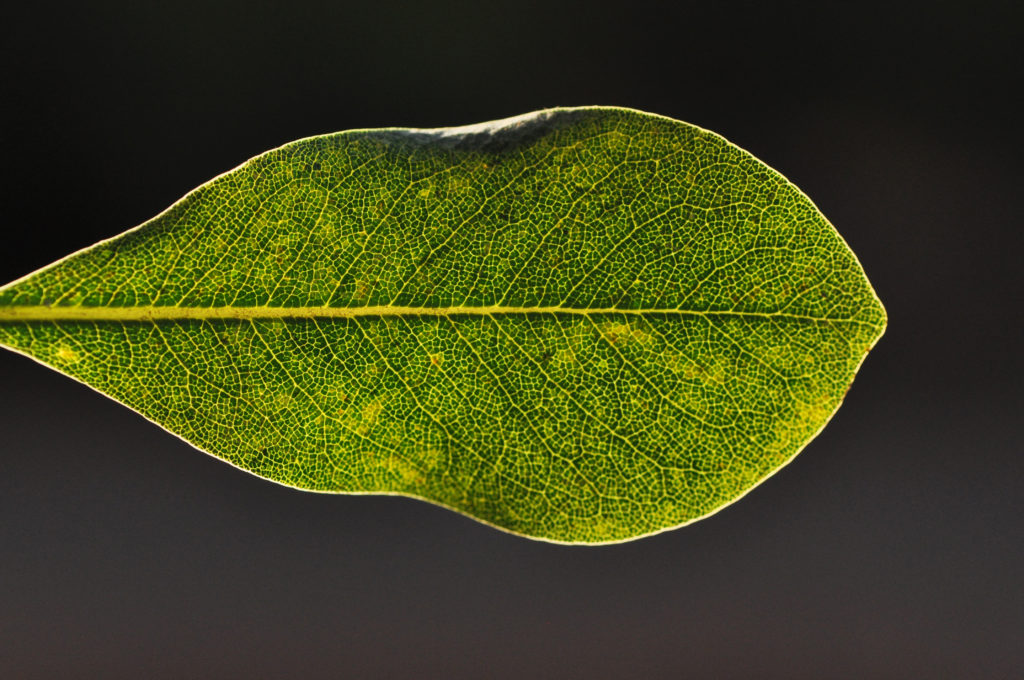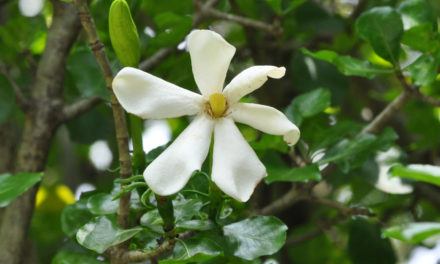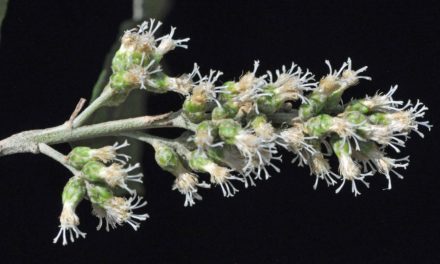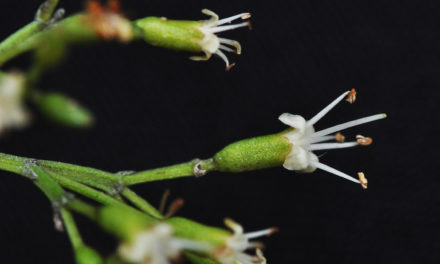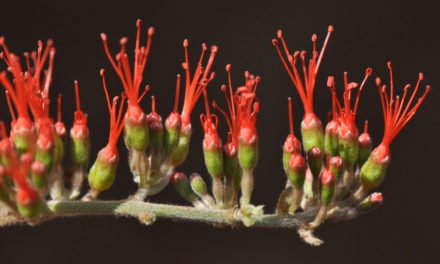General Info – summary
This resinous Tree may be deciduous. It has a spreading crown, a smoothish bark and is up to 9m high. Young bark has horizontal lenticels. The obovate, leathery and glossy Leaves are simple, entire and lack stipules. Small, white/greenish, 5-merous and often functionally unisexual Flowers are in panicles or terminal cluster. Both style and stigma are simple. The Fruit is a spherical capsule with sticky red seeds.
Description
Pittosporum viridiflorum
Previous Names: Pittosporum abyssinicum, Pittosporum antunesii, Pittosporum commutatum, Pittosporum floribundum, Pittosporum kruegeri, Pittosporum malosanum, Pittosporum quartinianum, Pittosporum sinense, Pittosporum viridiflorum subsp. Malosanum, Pittosporum viridiflorum subsp. Quartinianum, Pittosporum viridiflorum var. angolense, Pittosporum viridiflorum var. commutatum, Pittosporum viridiflorum var. kruegeri, Pittosporum vosseleri.
SA Tree No. 139.
Common names: (Afr) Bosbeukenhout, Bosboekenhout, Kaarsuur, Kasuur, Kersuurboom¸ Rooiboekenhout, Witboekenhout. (Eng) Cheesewood, Umkwenkwe, White Cape Beech. (Northern Sotho) Kgalagangwe. (siSwati) Mkhwakhwa, Sibhaha-senkhangala, Umvusamvu. (Setswana) Mohatollo, Moohluwa, Mosetlela, Motsosanku, Phukgu. (Tsonga) Mpatakhamelo, Mpustinya-poqo, Nkasur. (Tshivenda) Mulondwane, Mutanzwakhamelo. (isiXhosa) Umgqwengqwe, Umkhwenkwe. (isiZulu) Umfusamvu, Umkhwenkwe, Umphushamvu, Umphushane, Umvusamvu.
Family: Pittosporaceae (Cheesewood family – with 9 genera and about 220 species). The Trees are resinous, usually small and possess schizogenous (plant intercellular space formed by splitting of their common wall) secretory canals. The simple Leaves have various shapes and lack stipules. Flowers are actinomorphic, bisexual or functionally unisexual. 5 Sepals and 5 Petals are present. The petals are white, yellowish or greenish. The 5 Stamens alternate with the petals and have erect anthers which dehisce through longitudinal slits. The Ovary is superior. Fruit is a capsule or a berry. Slow drying sticky resin covers the red or orange Seeds. In southern Africa Pittosporum is the only genus.
Name derivation: Pittosporum – pitta is Greek for pitch or resin – and sporum – seeds – referring to the seed, which may have a resinous coating. viridiflorum – with green flowers. Two species of Pittosporum occur in South Africa and only Pittosporum viridiflorum may be a tree.
Conservation: National Status: L C. (Least Concern). Assessed: 2005 (W. Foden and L. Potter).
Tree
This resinous Tree has schizogenous (plant intercellular space formed by splitting of their common wall) canals present. In forests, the Tree may occasionally reach 15m high but is usually up to 9m. The Crown (photo 330) may be dense and spreading. In adverse conditions, the plant may be a shrub. The young, bitter tasting Bark is pale to darkish grey and smooth. The bark roughens as the tree ages and the Trunk may be fluted (grooved, funnelled or channelled), in large specimens. Visible horizontal bands of brown Lenticels (a usually raised corky oval or elongated area on the plant that allows the uncontrolled interchange of gases with the environment) may be present on the trunk and young branches (photos 325 & 326). Within the visible Leaf Scars (photo 732), the remains of 3 Veins are clearly visible. These were responsible for the transport of water and mineral salts to the leaves and for the movement of products of photosynthesis from the leaves. This plant has no tendrils.
- 330. 2016/01/26. Pretoria NBG. Photo: David Becking.
- 325. 2016/01/26. Pretoria NBG. Photo: David Becking.
- 326. 2016/01/26. Pretoria NBG. Photo: David Becking.
- 732. 2018/02/12. Pretoria NBG. Photo: David Becking.
Leaves
The mostly obovate, leathery and almost hairless Leaves are simple (have a single blade which may have incisions that are not deep enough to divide the blade into leaflets). The spirally arranged leaves occur at branch ends and may appear whorled. Each leaf is up to 11 x 4cm (photo 327) and leaves are deciduous when situated inland at higher altitudes. Near the coast, the trees may be evergreen. The Apex may be rounded, shortly tapering or notched. The Base tapers (photo 62). The Margin is usually wavy and is entire (with a continuous margin, not in any way indented). Leaves have a resinous smell when crushed, and are dark or bluish green above, and lighter below. The leaf detail is enhanced when it is viewed against a strong light (photo 441). Here a hand lens is useful. In this photo, the translucent veins between the side veins resemble a square pavement pattern. The glossy leaves stand out on trees as they reflect the sun (photo 738). The Petiole (leaf stalk) is up to 2cm long. Stipules (basal appendages of the petiole) are absent. Each cluster of leaves may have one that is deformed.
- 738. 2018/02/12. Pretoria NBG. Photo: David Becking.
- 62. 2019/09/12. Pretoria NBG. Photo: David Becking.
- 327. 2016/01/26. Pretoria NBG. Photo: David Becking.
- 441. 2017/08/15. Pretoria NBG. Photo: David Becking.
Flowers
The small, greenish-white to cream, bisexual and 5-merous Flowers are sweetly scented. They develop in large numbers in terminal clusters or Panicles (indeterminate, branched inflorescence with stalked flowers). All flowers have some rudimentary non-functional sex organs. The trumpet-shaped flowers are more often functionally unisexual and actinomorphic (Regular, symmetrical. Flowers are vertically divisible into similar halves by more than 1 plane passing through the axis). There are 5 Sepals in the Calyx that are shorter than the petals. The Corolla consists of 5 recurving Petals which are imbricate (having regularly arranged, overlapping edges, as roof tiles), at least in the bud. When present there are 5 distinct Stamens which are free from the corolla. These stamens alternate with the petals and are hypogynous (born under the ovary). Their Filaments are shorter than the erect Anthers, which are ovate to oblong and dehisce through longitudinal slits. When present there is a single Pistil (a unit of the Gynoecium, the female element of the flower, composed of the Ovary, Style and Stigma). Here the superior Ovary contains 2 carpels joined together by the margins only. The single Style is short. Both the style and Stigma are simple. (Sep-Dec).
Fruit
Each Fruit is a small (10mm diameter), yellowish brown and almost spherical Capsule (a dry fruit resulting from the maturing of a compound Ovary that usually opens at maturity by one or more lines of dehiscence). Fruit is crowded at the ends of branches. Each fruit has 2 valves and is up to 1cm in diameter. The initially green capsule matures and becomes yellowish orange. The capsule splits revealing 4 orange-red shiny Seeds in each valve. The outer shell of the capsule may remain after the seeds are shed – turning a dark brown colour. A pleasant smelling, red, sticky, slow-drying resin covers the seeds. (Nov-May). The presence of fruit may turn the whole tree a yellowish colour becoming attractive when the seeds become visible.
Distribution & Ecology
These Trees are widespread in the South, East and to the North of South Africa. They can be found in the Western Cape e.g., Knysna, Eastern Cape, Free State, KwaZulu-Natal e.g., along streams in the Royal Natal National Park, Gauteng, Limpopo, Mpumalanga, North West, Lesotho – here including at relatively high altitudes, Swaziland e.g., in the ravines near to Mbabane (capital), Zimbabwe and into tropical Africa and India. The tree is found in a range of Habitats from sea level to an altitude of 1 800m and can withstand some frost. This habitat includes open bushveld, rocky outcrops, forests, forest margins, evergreen forests and deciduous woodlands. Bushbuck, Kudu and Nyala browse the Leaves. The leaves have a resinous smell when crushed. Birds including Starlings and the Red-eyed Doves consume the Seeds. These plants may become invasive. This is a Protected Tree in SA.
Ethnobotany
This undemanding and attractive garden Tree is colourful when in fruit. It is resistant to light frost and is fairly drought tolerant. The Root system is non-aggressive. The plants can become invasive in the open. The white Wood is soft, is not a good fuel source and is little used. Young Branches smell of carrots when crushed. Goats consume the Leaves. Farmers appreciate the shade that the tree provides. This tree grows easily from Seeds that should be planted in full sun or partial shade – in a well-drained area. Cuttings are also useable. The bitter tasting Bark may smell of liquorice and is used in local medicine.
References
Boon, R. 2010. Pooley’s Trees of eastern South Africa. Flora and Fauna Publications Trust, Durban.
Burrows, J.E., Burrows, S.M., Lotter, M.C. & Schmidt, E. 2018. Trees and Shrubs Mozambique. Publishing Print Matters (Pty) Ltd. Noordhoek, Cape Town.
Coates Palgrave, M. 2002. Keith Coates Palgrave Trees of Southern Africa, edn 3. Struik, Cape Town.
Foden, W. & Potter, L. 2005. Pittosporum viridiflorum Sims. National Assessment: Red List of South African Plants version 2020.1. Accessed on 2023/10/12.
Lawrence, G. H. M, 1951. Taxonomy of Vascular Plants. The Macmillan Company, New York. Tenth Printing 1965.
Palmer, E. & Pitman, N. 1972. Trees of southern Africa. Balkema, Amsterdam, Cape Town.
Schmidt, S. Lotter, M. & McCleland, W. 2002. Trees and Shrubs of Mpumalanga and the Kruger National Park. Jacana, Johannesburg.
van Wyk, B. & van Wyk, P. 1997 Field guide to Trees of Southern Africa. Struik, Cape Town.
http://plantzafrica.com/plantnop/pittosporumvirid.htm
http://operationwildflower.org.za/index.php/plant-records/trees/116-pittosporum-viridiflorum

